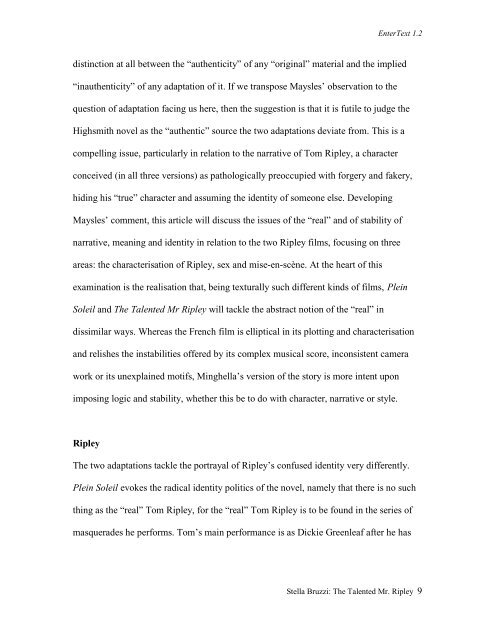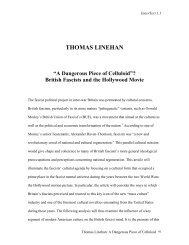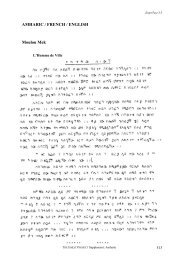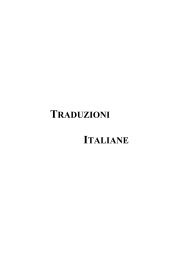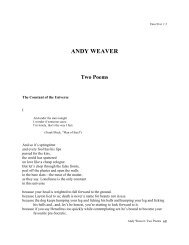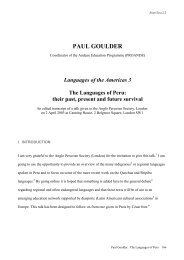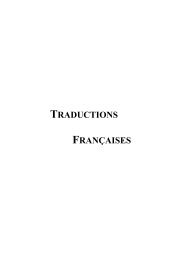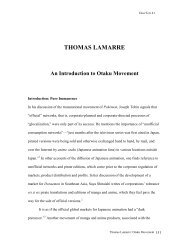Stella Bruzzi: The Talented Mr. Ripley - Arts @ Brunel
Stella Bruzzi: The Talented Mr. Ripley - Arts @ Brunel
Stella Bruzzi: The Talented Mr. Ripley - Arts @ Brunel
You also want an ePaper? Increase the reach of your titles
YUMPU automatically turns print PDFs into web optimized ePapers that Google loves.
EnterText 1.2<br />
distinction at all between the “authenticity” of any “original” material and the implied<br />
“inauthenticity” of any adaptation of it. If we transpose Maysles’ observation to the<br />
question of adaptation facing us here, then the suggestion is that it is futile to judge the<br />
Highsmith novel as the “authentic” source the two adaptations deviate from. This is a<br />
compelling issue, particularly in relation to the narrative of Tom <strong>Ripley</strong>, a character<br />
conceived (in all three versions) as pathologically preoccupied with forgery and fakery,<br />
hiding his “true” character and assuming the identity of someone else. Developing<br />
Maysles’ comment, this article will discuss the issues of the “real” and of stability of<br />
narrative, meaning and identity in relation to the two <strong>Ripley</strong> films, focusing on three<br />
areas: the characterisation of <strong>Ripley</strong>, sex and mise-en-scène. At the heart of this<br />
examination is the realisation that, being texturally such different kinds of films, Plein<br />
Soleil and <strong>The</strong> <strong>Talented</strong> <strong>Mr</strong> <strong>Ripley</strong> will tackle the abstract notion of the “real” in<br />
dissimilar ways. Whereas the French film is elliptical in its plotting and characterisation<br />
and relishes the instabilities offered by its complex musical score, inconsistent camera<br />
work or its unexplained motifs, Minghella’s version of the story is more intent upon<br />
imposing logic and stability, whether this be to do with character, narrative or style.<br />
<strong>Ripley</strong><br />
<strong>The</strong> two adaptations tackle the portrayal of <strong>Ripley</strong>’s confused identity very differently.<br />
Plein Soleil evokes the radical identity politics of the novel, namely that there is no such<br />
thing as the “real” Tom <strong>Ripley</strong>, for the “real” Tom <strong>Ripley</strong> is to be found in the series of<br />
masquerades he performs. Tom’s main performance is as Dickie Greenleaf after he has<br />
<strong>Stella</strong> <strong>Bruzzi</strong>: <strong>The</strong> <strong>Talented</strong> <strong>Mr</strong>. <strong>Ripley</strong> 9


